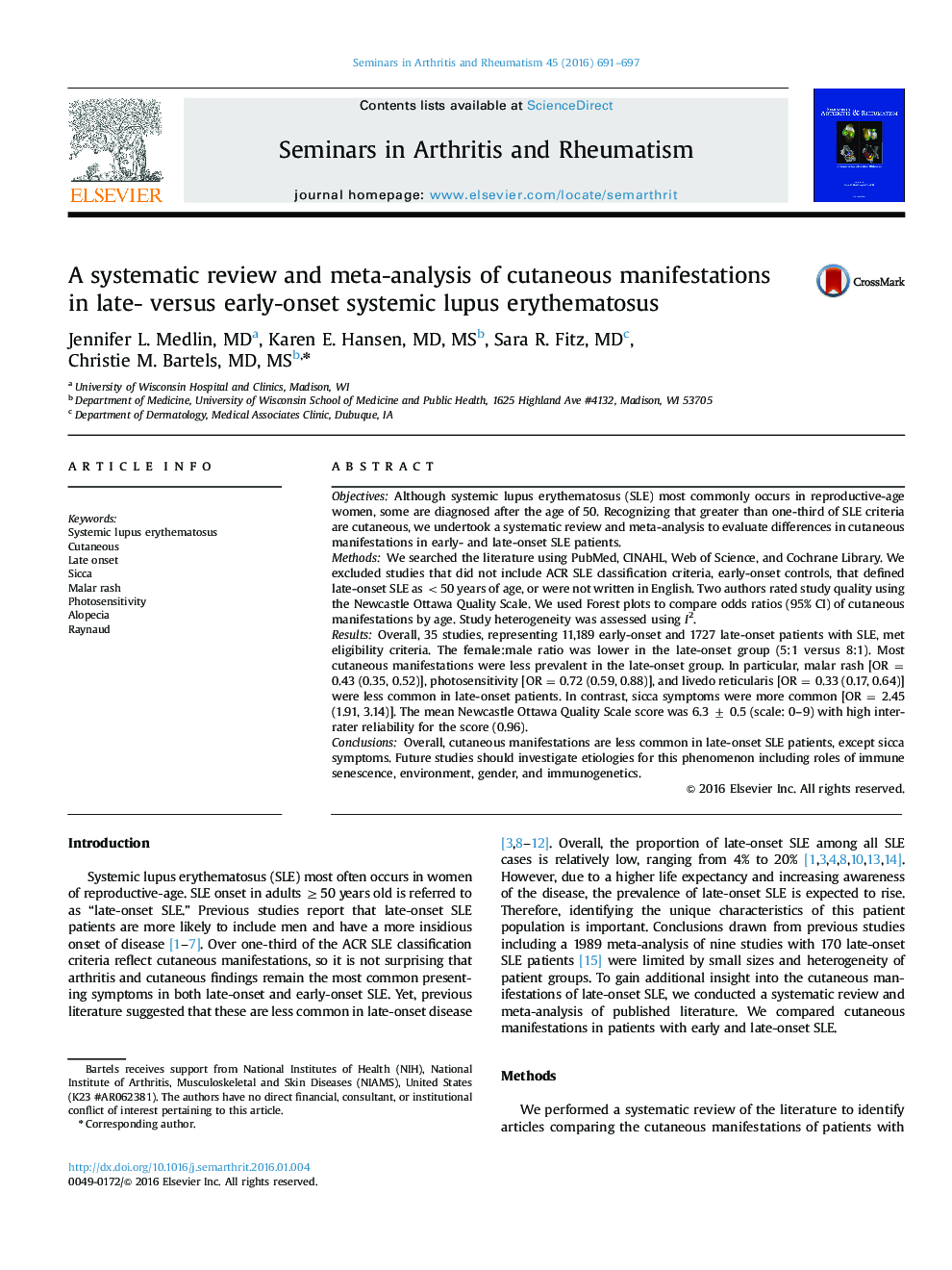| Article ID | Journal | Published Year | Pages | File Type |
|---|---|---|---|---|
| 2771269 | Seminars in Arthritis and Rheumatism | 2016 | 7 Pages |
ObjectivesAlthough systemic lupus erythematosus (SLE) most commonly occurs in reproductive-age women, some are diagnosed after the age of 50. Recognizing that greater than one-third of SLE criteria are cutaneous, we undertook a systematic review and meta-analysis to evaluate differences in cutaneous manifestations in early- and late-onset SLE patients.MethodsWe searched the literature using PubMed, CINAHL, Web of Science, and Cochrane Library. We excluded studies that did not include ACR SLE classification criteria, early-onset controls, that defined late-onset SLE as <50 years of age, or were not written in English. Two authors rated study quality using the Newcastle Ottawa Quality Scale. We used Forest plots to compare odds ratios (95% CI) of cutaneous manifestations by age. Study heterogeneity was assessed using I2.ResultsOverall, 35 studies, representing 11,189 early-onset and 1727 late-onset patients with SLE, met eligibility criteria. The female:male ratio was lower in the late-onset group (5:1 versus 8:1). Most cutaneous manifestations were less prevalent in the late-onset group. In particular, malar rash [OR = 0.43 (0.35, 0.52)], photosensitivity [OR = 0.72 (0.59, 0.88)], and livedo reticularis [OR = 0.33 (0.17, 0.64)] were less common in late-onset patients. In contrast, sicca symptoms were more common [OR = 2.45 (1.91, 3.14)]. The mean Newcastle Ottawa Quality Scale score was 6.3 ± 0.5 (scale: 0–9) with high inter-rater reliability for the score (0.96).ConclusionsOverall, cutaneous manifestations are less common in late-onset SLE patients, except sicca symptoms. Future studies should investigate etiologies for this phenomenon including roles of immune senescence, environment, gender, and immunogenetics.
